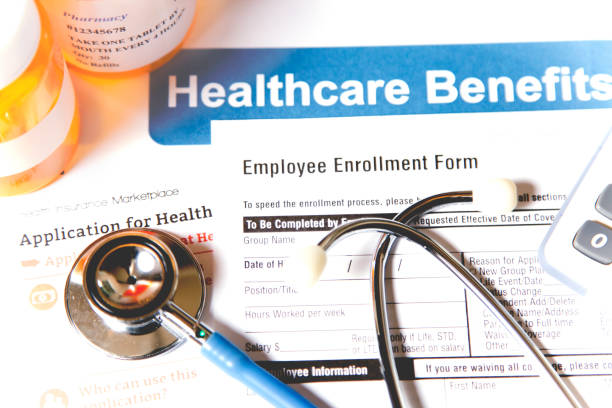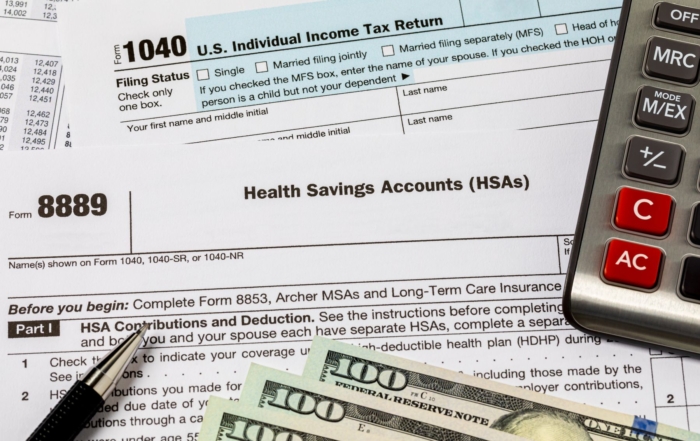We wanted to share with you this great content from the Society of Human Resources Management
This guide is designed to help employers that sponsor group health plans review their compliance with key provisions of the Affordable Care Act (ACA) for 2022. If you have any questions regarding your responsibilities, please contact a knowledgeable employment law attorney, benefits advisor or your carrier.
Please Note: This guide is for general reference purposes only and is not all-inclusive. The information is subject to change based on new requirements or amendments to the law. Additionally, your company or group health plan may be exempt from certain requirements and/or subject to more stringent rules under your state’s laws.
STEP 1: EVALUATE GRANDFATHERED STATUS OF GROUP HEALTH PLAN
A grandfathered plan is one in existence as of March 23, 2010, that has covered at least one person continuously from that day forward. Plans may lose “grandfathered” status if they make certain significant changes that reduce benefits or increase costs to employees. A health plan must disclose whether it considers itself a grandfathered plan. Grandfathered plans do not have to comply with certain Affordable Care Act rules.
-
-
Determine whether any changes to the plan that reduce benefits or increase costs to employees and dependents enrolled in coverage result in a loss of grandfathered status.
-
If the plan loses grandfathered status, confirm that the plan design and benefits offered reflect all Affordable Care Act requirements that previously did not apply because the plan was exempt (such as coverage of preventive services without cost-sharing).
-
If the plan remains grandfathered, provide a Notice of Grandfathered Status whenever a summary of plan benefits is provided to participants and beneficiaries. Continue to maintain records documenting the terms of the plan that were in effect on March 23, 2010, and any other documents necessary to verify grandfathered status.
-
STEP 2: REVIEW PLAN DOCUMENTS FOR REQUIRED CHANGES TO PLAN BENEFITS
Certain requirements apply to particular plan designs, as noted below.
All Group Health Plans:
-
-
Ensure that any waiting period—the time that must pass before coverage can become effective for an employee or dependent who is otherwise eligible to enroll in the plan—does not exceed 90 days. (Other conditions for eligibility that are not based solely on the lapse of a time period are generally permissible.)
-
If the plan requires completion of an employment-based orientation period as a condition for eligibility, ensure the orientation period does not exceed one month and the maximum 90-day waiting period begins on the first day after the orientation period. (Note: Employers subject to “pay or play” may not be able to impose the full one-month orientation period and the full 90-day waiting period without potentially becoming subject to a penalty.)
-
-
Confirm that no annual dollar limits apply to coverage of “essential health benefits” (EHBs), a comprehensive package of items and services. If the plan limits the number of visits to health providers or days of treatment, verify that the visit or day limit does not amount to a dollar limit.
-
Verify that no pre-existing condition exclusions are imposed on any individual, regardless of age.
-
With the exception of certain HRAs, ensure that an employer payment plan is not in place (an arrangement under which an employer reimburses an employee for some or all of the premium expenses incurred for an individual health insurance policy or uses its funds to directly pay the premium for an individual policy).
-
Nongrandfathered Group Health Plans Only:
-
-
Ensure that annual out-of-pocket costs for coverage of all EHBs provided in-network do not exceed $8,700 for self-only coverage or $17,400 for family coverage. (Note: The self-only maximum annual limitation on cost-sharing applies to each individual, regardless of whether the individual is enrolled in self-only coverage or family coverage under a group health plan.)
-
-
-
-
Plans with more than one service provider may structure a benefit design using separate out-of-pocket limits across multiple categories of benefits (rather than reconcile claims across multiple service providers), provided the combined amount of any separate out-of-pocket limits applicable to all EHBs under the plan does not exceed the annual limit.
-
A plan that includes a network of providers may, but is not required to, count out-of-pocket spending for out-of-network and noncovered items and services toward the plan’s annual maximum out-of-pocket limit.
-
-
STEP 3: ANALYZE TAX-FAVORED ARRANGEMENTS
Employers who maintain HRAs, health FSAs and cafeteria plans should confirm that these arrangements comply with Affordable Care Act requirements.
Health Reimbursement Arrangements (HRAs)
-
-
Review the additional HRA design options that became available beginning in 2020, determine which type of HRA to offer and ensure appropriate HRA plan design requirements are satisfied.
-
If Individual Coverage HRA or a Qualified Small Employer HRA (QSEHRA) is offered, provide eligible employees with applicable written notice at least 90 days before the beginning of the plan year.
-
Health Flexible Spending Arrangements (FSAs)
-
-
Confirm that the health FSA qualifies as an excepted benefit.
-
Health FSAs are considered to provide only excepted benefits if the employer also makes available group health plan coverage that is not limited to excepted benefits and the health FSA is structured so that the maximum benefit payable to any participant cannot exceed two times the participant’s salary reduction election for the health FSA for the year (or, if greater, cannot exceed $500 plus the amount of the participant’s salary reduction election).
-
-
Confirm that the health FSA is offered through a cafeteria plan (a plan that meets specific requirements to allow employees to receive certain benefits on a pretax basis).
-
Ensure plan documents are amended to reflect that employee salary reduction contributions to health FSAs are limited to a certain amount. For 2022, the contribution limit is $2,850.
-
The amendment to the written cafeteria plan may be expressed as a maximum dollar amount, a maximum percentage of compensation or by another method of determining the maximum salary reduction contribution.
-
-
Determine whether you will allow employees to carry over up to $550 of unused health FSA amounts to use in the following plan year and adopt appropriate plan amendments. (A plan incorporating the carryover provision may not also provide for a grace period in the plan year to which unused amounts may be carried over.)
-
Cafeteria Plans Generally
-
- Confirm that Section 125 plan documents comply with the prohibition on providing a qualified health plan offered through the individual Health Insurance Marketplace as a benefit under an employer-sponsored cafeteria plan.
STEP 4: PROVIDE REQUIRED NOTICES TO EMPLOYEES AND DEPENDENTS
Health Insurance Exchange Notice
-
-
Provide a written notice with information about the Health Insurance Marketplace to each new employee, within 14 days of his or her start date. Employers are not required to provide a separate notice to dependents.
-
Summary of Benefits & Coverage (SBC)* and Notice of Plan Changes
-
-
Confirm contractual arrangements with the carrier (insured group health plans) or third-party administrator (self-insured plans) to prepare and provide the SBC. If the carrier or TPA does not assume responsibility, the employer should provide this notice (without charge) to employees and beneficiaries at specified times during the enrollment process and upon request.
-
Note: Employers that enter into a binding contract with another party to provide the SBC must satisfy additional obligations, including monitoring compliance.
-
-
Ensure that enrollees are provided with notice of any material modification that would affect the content of the SBC (and that occurs other than in connection with coverage renewal or reissuance) no later than 60 days prior to the effective date of the change.
-
STEP 5: COMPLY WITH “PAY OR PLAY” RESPONSIBILITIES
Applicable large employers—generally those with 50 or more full-time employees, including full-time equivalents—are subject to the ACA employer shared responsibility (“pay or play”) requirements. Due to the complexity of the law in this area, employers are strongly advised to work with knowledgeable employment law counsel to ensure full compliance.
-
-
Determine “applicable large employer” (ALE) status for the upcoming calendar year by calculating the average number of full-time employees and full-time equivalents (FTEs) across the months in the current year. (Special counting rules apply for seasonal workers.)
-
Employer Aggregation Rules: Small employers that individually do not employ 50 or more full-time employees or FTEs may still be subject to the requirements if they meet the threshold when combined with other companies under common ownership or that are otherwise related. (The rules for combining related employers do not apply for purposes of determining whether a particular company owes a penalty or the amount of any penalty. That is determined separately for each related company.)
-
-
Determine whether group health plan coverage will be offered to full- time employees (and their dependents), using the measurement methods and rules for calculating hours of service described in the “pay or play” final regulations.
-
An employee is full-time for a calendar month if he or she averages at least 30 hours of service per week (or 130 hours for the month). The final regulations describe approaches that can be used for various circumstances, such as for employees who work variable hour schedules, seasonal employees and employees of educational organizations.
-
-
For ALEs offering coverage, review the cost of your group health plan coverage to determine whether it is affordable.
-
In general, coverage is affordable in 2022 if an employee’s required contribution for self-only coverage does not exceed 9.61% of his or her household income for the taxable year. ALEs may use a number of safe harbors to determine affordability, including reliance on Form W-2 wages.
-
The IRS has stated that until final regulations on opt-out arrangements are applicable, employers can rely on the opt-out arrangement guidance provided in IRS Notice 2015-87 and a subsequent proposed rule. That guidance generally provides that, for purposes of the pay or play rules and the corresponding information reporting provisions, employers are only required to increase an employee’s required contribution by the amount of an unconditional opt-out arrangement adopted after Dec. 16, 2015. An unconditional opt-out arrangement provides payments conditioned solely on an employee declining employer-sponsored coverage, and not on an employee satisfying any other meaningful requirement related to the provision of health care to employees (such as a requirement to provide proof of other coverage).
-
-
For ALEs offering coverage, determine whether your group health plan coverage provides minimum value.
-
A plan generally provides minimum value if it pays for at least 60% of covered health care expenses and provides substantial coverage of inpatient and physician services. Federal agencies have produced a minimum value calculator to determine if a plan with standard features provides minimum value. However, results of the calculator—or any other method chosen—should be carefully reviewed with benefits counsel.
-
-
Determine if a penalty may apply. An ALE may be liable for a penalty if it does not offer affordable health insurance that provides minimum value to its full-time employees (and their dependents), and any full-time employee receives a premium tax credit for purchasing individual coverage on the Health Insurance Marketplace. (Note: In determining if a penalty applies, ALEs should be aware of limited nonpenalty periods provided for in the “pay or play” final regulations (Section 54.4980H–5 (26), during which an ALE generally will not be subject to a penalty.)
-
Determine whether to appeal a Marketplace decision from a prior year, if applicable. The Health Insurance Marketplace sends letters to notify certain employers that one or more of their employees was determined eligible for advance premium tax credits and cost-sharing reductions and had enrolled in a Marketplace plan. Because these events may trigger employer “pay or play” penalties, employers must file an appeal within 90 days of the date stated on the Marketplace notice.
-
Review and respond to IRS Letter 226J, if applicable. The IRS issues Letter 226J to an ALE if it determines that, for at least one month in the year, one or more of the ALE’s full-time employees was enrolled in a qualified health plan for which a premium tax credit was allowed (and the ALE did not qualify for an affordability safe harbor or other relief for the employee). ALEs must complete the response form (Form 14764) indicating their agreement or disagreement and follow the appropriate instructions.
-
Pay assessed “pay or play” penalties, if applicable. The IRS will assess “pay or play” penalties for prior years and issue a notice and demand for payment via Notice CP 220J. That notice will instruct the ALE on the amount due and payment options.
-
STEP 6: SATISFY INFORMATION REPORTING REQUIREMENTS (FORMS 1094 AND 1095)
Information reporting is used to determine compliance with the Affordable Care Act’s “pay or play” provisions. Reporting entities are required to report in early 2022 for coverage offered (or not offered) in calendar year 2021.
-
-
Determine if you are a reporting entity (and what type) to understand applicable reporting requirements:
-
“Section 6055” Reporting Entities. Self-insuring employers that are not ALEs that provide minimum essential health coverage are required to report information on this coverage to the IRS and to covered individuals under Section 6055 of the Internal Revenue Code.
-
“Section 6056” Reporting Entities. ALEs with 50 or more full- time employees (including FTEs) are required to report information to the IRS and to their employees about their compliance with “pay or play” under Internal Revenue Code Section 6056.
-
-
Compile the required information for Section 6055 reporting and/or the required information for Section 6056 reporting.
Review the IRS Forms and Instructions:
-
Forms 1094-B and 1095-B (along with Instructions) are available for Section 6055 reporting entities.
-
Forms 1094-C and 1095-C (along with Instructions) are available for Section 6056 reporting entities (or employers that are subject to both reporting provisions).
-
-
Determine whether to hire a third party to fulfill reporting responsibilities (reporting entities will still be liable for the failure to report information and furnish statements).
-
For Section 6056 reporting entities, determine whether you will use the general method of reporting or a simplified alternative method to satisfy the reporting requirements.
-
If the reporting entity plans to furnish statements electronically for the first time, or if prior consent only applied to the statements required to be furnished in prior reporting years, ensure that affirmative consent is obtained from employees prior to furnishing (Section 6056 reporting entities must also ensure that certain notice, hardware and software requirements are met). See the Instructions for Forms 1094-C and 1095-C for additional information about obtaining consent for electronic furnishing.
-
Remember to comply with the information reporting deadlines:
-
Section 6055 Deadlines (Forms 1094-B and 1095-B):
-
-
Forms 1094-B and 1095-B must generally be filed with the IRS annually, no later than February 28 (or March 31, if filing electronically).
-
-
-
Forms 1095-B must generally be furnished to responsible individuals (maybe the primary insured, employee, former employee or other related person named on the application) by January 31 (extended to March 2 in 2022).
-
Section 6056 Deadlines (Forms 1094-C and 1095-C):
-
-
Forms 1094-C and 1095-C must generally be filed with the IRS annually, no later than February 28 (or March 31, if filing electronically).
-
-
-
Forms 1095-C must generally be furnished to all full-time employees by January 31 (extended to March2 in 2022).
-
STEP 7: OTHER ACTION ITEMS
The following outlines actions required for continued ACA compliance, as well as additional items that may be of significance for certain employers and group health plans.
-
-
Additional Medicare Tax for High Earners. Remember to withhold Additional Medicare Tax (0.9%) on wages or compensation paid to an employee in excess of $200,000 in a calendar year.
-
Coverage of Preventive Services. Continue to monitor guidelines for preventive services, which are regularly updated to reflect new scientific and medical advances. As new services are approved, non-grandfathered group health plans will be required to cover them with no cost-sharing for plan years beginning one year later.
-
Medical Loss Ratio (MLR) Rebates. Distribute rebates received from insurance companies to eligible plan enrollees as appropriate. Rebates are due to employer-policyholders by September 30 of each year. These rules do not apply to employers who operate self-insured plans.
-
PCORI Fees. Employers sponsoring certain self-insured health plans are responsible for fees to fund the Patient-Centered Outcomes Research Institute (PCORI). To report and pay the fees, IRS Form 720 must be filed by July 31, 2022.
-
Form W-2 Reporting of Employer-Provided Health Coverage. Continue to report the cost of health coverage provided to each employee annually on Form W-2, which must be furnished to employees by January 31. (This requirement does not apply to employers required to file fewer than 250 Forms W-2 for the preceding calendar year.)
-
Section 1557 Nondiscrimination Requirements (If Applicable). Entities administering any health program or activity that receives federal financial assistance (such as hospitals that accept Medicare or doctors who accept Medicaid) must confirm compliance with the final rule implementing Section 1557 of the Affordable Care Act, which prohibits discrimination on the basis of race, color, national origin, sex, age or disability. In addition, certain notice and tagline requirements must be met.
-
Recent Posts
Poison Ivy, Oak & Sumac Safety Guide for Landscaping, Construction, and Outdoor Workers
Why Construction and Outdoor Workers Need to Know About Poison Plants The CDC reports that 80-90% of adults develop rashes from poison ivy exposure, and [...]
Multi-State Business Operations: Insurance and Compliance Strategies for Growing New Hampshire Auto Companies
Picture a successful New Hampshire automotive dealership that starts with a single location in Manchester. Over time, they expand their service territory, hire employees who [...]
Revolutionary HSA Changes in the 2025 Budget Bill: Your Complete Guide to Expanded Benefits
Introduction: A Game-Changer for Healthcare Financial Planning The 2025 federal budget reconciliation bill, recently passed by the House, introduces the most significant expansions to Health [...]




